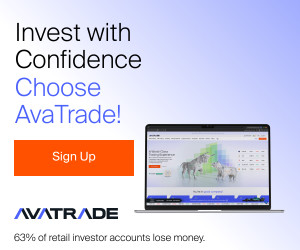Discover how reliability protocols in blockchain work, their importance in trading, and standout examples. An essential guide for traders interested in blockchain.
HOW TO INVEST IN DOGECOIN
Dogecoin is a cryptocurrency that started as a joke but has grown into a significant player in the digital currency world. Known for its friendly and accessible mascot, the Shiba Inu, Dogecoin has been endorsed by high-profile figures like Elon Musk, which has boosted its popularity. So, is it a good investment? Are there potential downsides? What investment strategy should you use with this asset? This article will answer these questions and more.

How to Trade Dogecoin
Dogecoin has become popular due to its high volatility and the community backing it, attracting both long-term investors and active traders. Trading Dogecoin (DOGE) involves everything from buying the cryptocurrency with the expectation that its price will increase over time to using financial instruments to take advantage of price fluctuations in the short term. Below are the alternatives for investing and trading Dogecoin, the markets it is traded on, general steps to start trading, and key considerations for proper execution and monitoring of trades.
Investment and Trading Alternatives in Dogecoin
There are various ways to gain exposure to the price of Dogecoin, each with its own characteristics:
Direct purchase (spot) and “HODL” strategy: The simplest way to invest in Dogecoin is to buy DOGE through an exchange or broker and store it in your own digital wallet. This strategy allows you to hold the asset long-term, trusting that its value will increase over time despite its high volatility.
Active trading of Dogecoin: Involves buying and selling DOGE more frequently to capitalize on price fluctuations in the short or medium term. Active traders use technical analysis by reviewing charts, patterns, support and resistance levels, and applying tools like moving averages and RSI to determine entry and exit points. This approach requires rigorous risk management.
Dogecoin derivatives (futures, options, CFDs): Another alternative is to trade derivatives whose value is based on the price of DOGE, without needing to own the cryptocurrency. For example, CFDs allow opening long or short positions with leverage, which can amplify both gains and losses.
Indirect financial instruments (ETFs and related stocks): For those who prefer not to handle cryptocurrencies directly, products may emerge offering indirect exposure to Dogecoin, such as ETFs replicating the price of DOGE or stocks of companies linked to its ecosystem. Although these products are less common, they represent a potential way to diversify exposure without handling direct custody of the asset.
Markets Where Dogecoin is Traded: Centralized vs Decentralized Exchanges
Dogecoin is traded on platforms known as exchanges (cryptocurrency trading platforms). There are two main types:
Centralized Exchanges (CEX): These are platforms managed by companies that act as intermediaries between buyers and sellers of DOGE. Popular examples include Binance, Coinbase, and Kraken. These exchanges offer high liquidity, advanced tools, and ease of use, although they involve ceding custody of your assets to the platform.
Decentralized Exchanges (DEX) and P2P markets: Allow direct trading between users with no intermediaries. In a DEX, each user maintains control of their private keys and funds, while the platform facilitates order matching through smart contracts. This modality offers greater privacy and security, though generally with lower liquidity.
Additionally, Dogecoin is traded in OTC markets and through brokers offering CFDs on DOGE. Remember that the Dogecoin market operates 24/7 globally, which means its price can fluctuate at any time.
General Steps to Trade Dogecoin
To trade Dogecoin effectively, follow these steps integrating adequate risk management:
Research and understand the asset:
Learn about what Dogecoin is, how its network functions, and what factors influence its price. This includes understanding the popularity and community that supports DOGE, as well as the events and news that can generate volatility.Define your style and strategy:
Decide if your approach will be long-term investment or active trading, or a combination of both. Establish a clear plan with entry and exit objectives and define the percentage of your capital you will allocate to each trade to properly manage risk.Choose the right platform:
Select a reliable exchange or broker that allows you to trade DOGE, whether centralized or decentralized. Consider security, liquidity, fees, and ease of use. Set up security measures like two-factor authentication and, if possible, store your DOGE in a personal wallet for greater protection.Analyze the market and decide your position:
Study current market conditions using charts and technical indicators to identify trends and key levels. Decide whether to take a long position (buy DOGE expecting it to rise) or, if trading derivatives, short (sell if you expect it to fall). Define the position size based on your capital and risk tolerance.Execute the order and set protections:
Place the buy or sell order on the chosen platform, using market or limit orders according to your strategy. It is advisable to set stop-loss orders to limit losses and take-profit orders to secure gains.Monitor and manage the trade:
Closely follow the development of your position, adjust your stop and take-profit levels as prices move, and stay informed of relevant news that may affect Dogecoin. Keep a record of your trades to evaluate and improve your strategy over time.Close or adjust the position:
When your objectives are reached or if the market moves against you, close the position as planned. Discipline in closing trades is crucial to protect your capital.
Approaches: Long-Term Investment vs Active Trading
Long-term investment (buy & hold): Those who bet on Dogecoin long-term generally buy and hold DOGE, trusting that the popularity and community support will boost its value over time, despite short-term volatility.
Active Trading (short/medium term): Active traders seek to benefit from price fluctuations in short periods using technical analysis and strategies like day trading, swing trading, or trend trading, which requires strict risk management.
Key Considerations in Execution and Monitoring
When trading Dogecoin, consider the following:
Risk management: Set loss limits (stop-loss) in each trade and don’t risk more than you’re willing to lose. Diversify your portfolio to avoid concentrating risk in a single asset.
Security of funds: If trading on centralized exchanges, use security measures like two-factor authentication and when not actively trading, consider transferring your DOGE to your own wallet.
Costs and liquidity: Review the platform's fees and spreads. Exchanges with high liquidity will allow you to execute trades without significant slippage.
Discipline: Define clear rules for entering and exiting the market and follow your plan rigorously. Keep a record of your trades to learn and adjust your strategy over time.
Continuous learning: Stay informed about developments in the Dogecoin ecosystem and update your strategy as the market evolves.
SWOT Analysis of Dogecoin (DOGE) as an Investment
This SWOT analysis evaluates Dogecoin, a meme-origin cryptocurrency that has gained popularity due to its community and volatility. The Strengths, Weaknesses, Opportunities, and Threats specific to DOGE are identified.
Strengths:
Strong and active community: Dogecoin has a loyal and enthusiastic user base that drives its popularity.
Low entry cost: Its affordable price allows a wide range of investors to participate, facilitating liquidity.
High recognition: Although originated as a meme, Dogecoin has established itself as one of the most well-known cryptocurrencies in the market.
Weaknesses:
Lack of clear utility: Unlike other cryptocurrencies with defined use cases, Dogecoin lacks a robust functionality beyond being a speculative asset.
High volatility: Its price can fluctuate sharply, posing risks for investors.
Opportunities:
Adoption as a payment method: The growing acceptance of cryptocurrencies in payments can enhance its practical use.
Community growth: Support from public figures and interest in meme culture can sustain high demand.
Potential integrations in DeFi: Incorporating into decentralized finance protocols could add utility and value to the token.
Threats:
Intense competition: The proliferation of new tokens and crypto projects may dilute interest in Dogecoin.
Regulatory uncertainty: Changes in cryptocurrency legislation can limit its operability and increase volatility.
Dependence on market sentiment: Its value is heavily influenced by viral trends and community sentiment, which can be unstable.
What is a Crypto Trading Broker?
A Broker is a Crypto Trading App, functioning as a digital platform accessible from both mobile devices and the web, allowing you to buy, sell, and manage cryptocurrencies. These applications act as intermediaries between you and crypto asset markets, facilitating real-time execution of trades and offering analysis and risk management tools.
Why do I need a Crypto Trading App?
Investing in cryptocurrencies requires access to updated information, analysis tools, and the ability to execute trades swiftly. A Crypto Trading App consolidates all these functionalities in one place, enabling you to seize market opportunities, manage your portfolio, and monitor your investments in real-time, in exchange for commissions or spreads per trade.
Examples and comparisons:
There are several internationally recognized crypto trading apps, such as Binance, Coinbase, Kraken, and for the Latin American market, Bitso is notable among others. Each offers specific features regarding interface, analysis tools, security options, and commission structures. Some are distinguished by providing an intuitive user experience and support in multiple languages, while others may offer more competitive operational costs or greater liquidity in certain markets.
Regulatory and security aspects
It's essential that the crypto trading app you choose complies with the regulations of the country where it operates or with international security standards. Many of these platforms are regulated by financial authorities and have advanced security protocols, such as two-factor authentication (2FA), cold storage for crypto assets, and data encryption, providing you with greater confidence when investing.
How do Crypto Trading Apps “connect” to Markets?
Through sophisticated technological platforms and agreements with liquidity providers, crypto trading apps facilitate the execution of buy and sell orders for cryptocurrencies. These applications connect to various exchanges and global markets, allowing transactions to be conducted quickly and securely, with the ability to track your investments in real-time.
In conclusion, a Crypto Trading App is your gateway to the dynamic world of cryptocurrencies, offering you the tools, security, and access needed to operate in this global market.
YOU MIGHT ALSO BE INTERESTED







